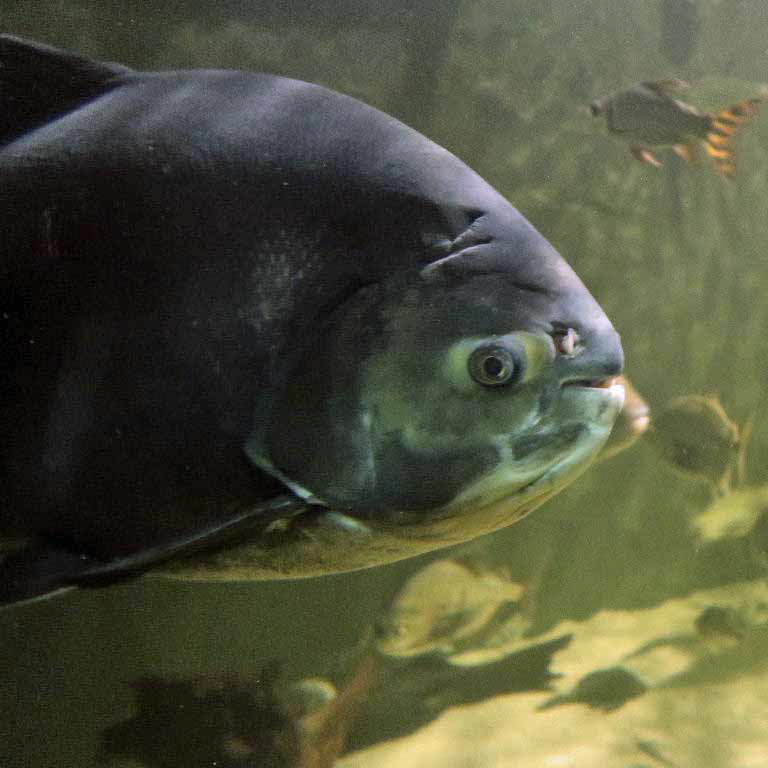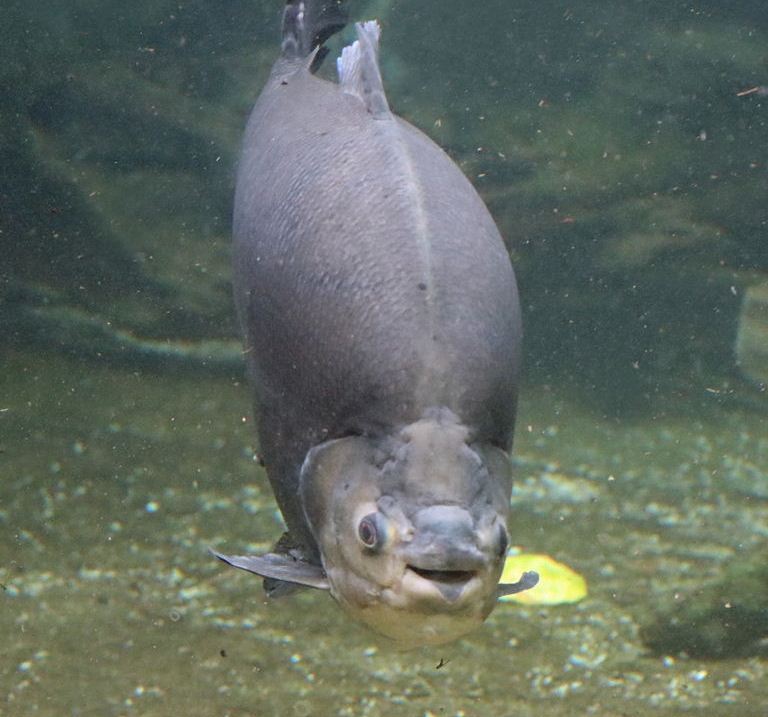Pirapitinga/Black Pacu Piaractus brachypomus/m


The Pirapitinga, also called Black Pacu and, for juveniles, Red-bellied Pacu, is native to the Amazon basin.
It reaches 88cm (c.3 feet) long and can weigh 25kg. (Two other species, Colossoma macropomum and P. orinoquensis
are also called Black Pacu. The former is also the Tambaqui. The latter, native to the Orinoco basin, was separated from the Amazon
Pirapitinga in 2019.)



It was previously included in the Colossoma genus with the Tambaqui. Previous synonyms include
Colossoma brachypomus/m, Colossoma bidens. The body of the adult is mainly black or dark grey, often a lighter
shade above and a darker shade below and often with a pale or white chin and belly.



Juveniles are shaped like their relative, the Piranhas, and, like other close relatives, have red bellies
(hence the name Red-bellied Pacu). They hide in shoals of Red-bellied Piranhas for protection. However they are mainly vegetarian
and have square, flat teeth unlike the carnivorous Piranha's sharp triangular teeth. They are not aggressive.



Adults eat fruit, nuts and seeds and are important seed dispersers. They can smell ripe fruit and
will wait below trees for fruit to drop. They may also eat small fish and invertebrates.



Pirapitinga can look similar to the larger Tambaqui and have similar habits and range.
Main visible differences other than size are: a rounder front shape (less pointed), a different gill/facial structure
and a tiny rounded "adipose" (back dorsal) fin without rays, in contrast to the spiny triangular adipose fin of the Tambaqui.
The Small-scaled or Parana Pacu, P. mesopotamicus, can also look similar but has smaller scales, smaller size
(up to 62cm (2 feet) long) and does not overlap in range.

